'Oranges & lemons,' say the bells of St. Clement's
November 23: St. Clement's Day (Hearthside Crafts | Table & Field Recipe)
‘Oranges and lemons,’
Say the bells of St. Clement’s.
‘You owe me five farthings,’
Say the bells of St. Martin’s.Traditional rhyme
Especially for bygone generations, I can imagine what an utter delight it must have been - amidst the staples of stored crops - to be comforted by a vibrant winter delicacy during these cold months: oranges and lemons, whether imported from warmer climes or grown locally in orangeries, are in season this time of year. Though we’re often used to having unfettered access to citrus today, these were once immense treats - seen preciously as dessert, they were brightly-colored, juicy marvels at the winter table. Perfect for celebrating St. Clement at the end of November!
For an introduction to St. Clement and his feast, visit:
Sweet in Speech, Ripe in Conversation
“It is said in the glossary that clement is said righteous, sweet, ripe, and meek, righteous in deed, sweet in speech, ripe in conversation, and meek in intention.”
Jacobus de Voragine, The Golden Legend
Given the records and stories of St. Clement’s personality, it seems fitting that precious winter fruit would dovetail into his canon of emblems. Clement’s association with oranges & lemons, though, doesn’t stem from the legends surrounding his life, but rather from a place of worship dedicated to him: the church of St. Clement Danes1 in London.
Next to the old St. Clement Danes’ churchyard was a wharf on the river Thames; during the winter months, prized citrus would land there, a selection of fruit being paid as a toll for passing through Clement’s Inn - near the church - on the way to market.
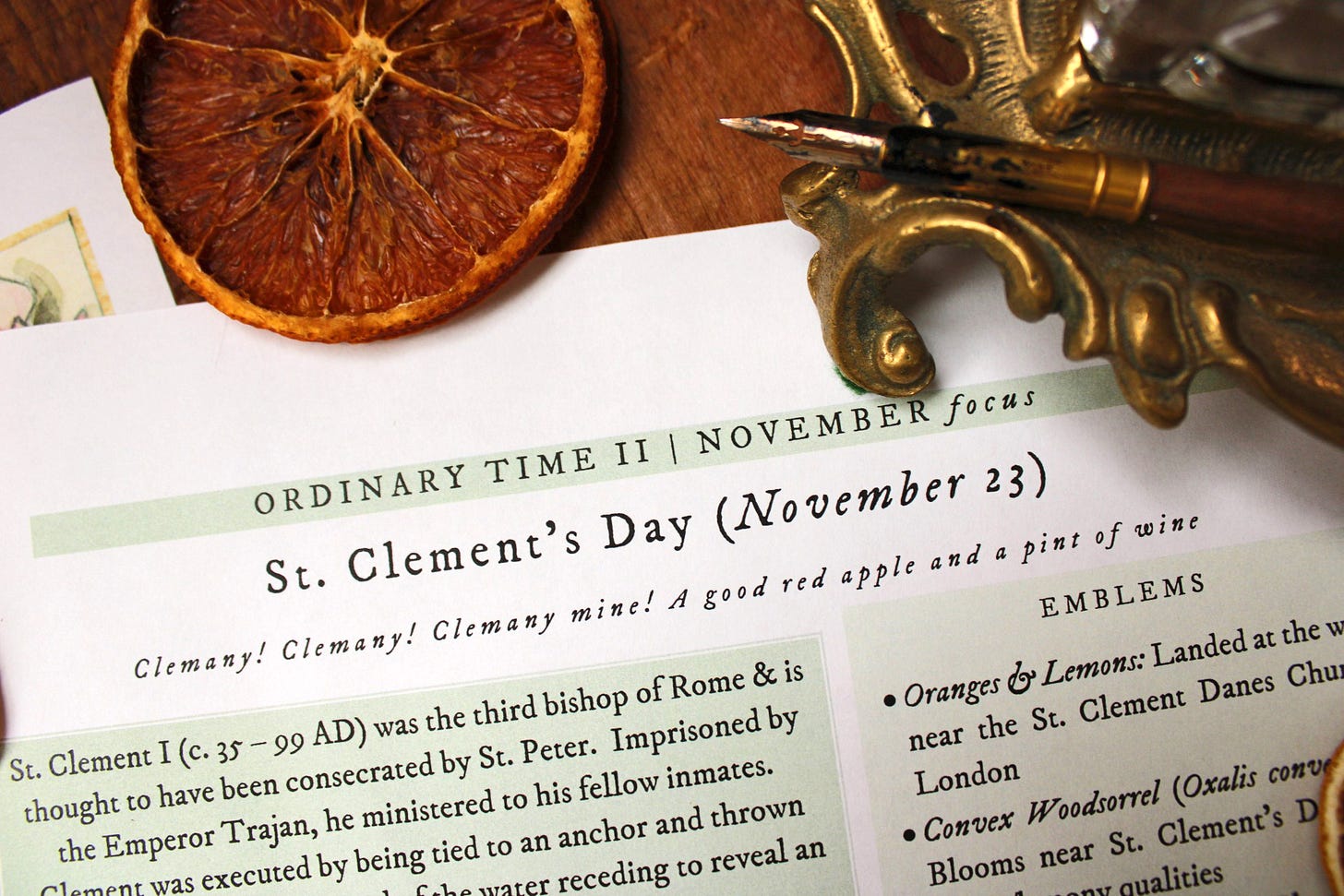
Trying to trace the lineage of Christian symbolism can be tricky business at times - it’s not an exact science, and associations outside of scripture developed over generations and were often anecdotal. In St. Clement’s ties to oranges and lemons, though, we see a really beautiful heritage in which the popular faith of worshippers, the needs and industries of a local people, grafts into the story of a saint.
And if we draw this thread out, weaving it with traditional Christian iconography & painting, we can further deepen the faithful reminders that oranges & lemons can serve to embody on St. Clement’s Day.
Lemons often served as an antidote to poison in ancient times and so became symbolic of salvation and of Christ’s power over sin. Because a lemon tree can produce fruit year-round, it also represented the Blessed Virgin Mary’s fidelity - her sufferings borne for the love of God. Citron - Citrus medica (called in Hebrew etrog) - is the ancestor of the lemon, and it continues to serve an important role in the Jewish holiday Sukkot, representing the heart…the seat of wisdom & reason.
Oranges were symbolic of redemption, often replacing the apple as the fruit of the Tree of Knowledge - encompassing both the concept of original sin, as well as Christ’s Passion and, therefore, our redemption. The orange’s white blossoms, originally associated with chastity and brides (owing in part to stories about Jupiter & Juno’s wedding in Roman tradition, in which Juno brought citrus trees as her dowry), became representative of the BVM’s purity. Renaissance depictions of evergreen trees in scenes of Paradise often use the orange tree, inspired by Psalm 1:3: “He is like a tree planted by streams of water that yields its fruit in its season, and its leaf does not wither. In all that he does, he prospers” (ESV).2
“An Andalusian tradition, given by De Gubernatis, relates that the Virgin Mary, journeying with the infant Jesus and with Joseph, came to the Orange-tree, which was guarded by an eagle, and begged of it one of the Oranges for the holy child. The eagle miraculously fell asleep, and the Virgin thereupon plucked not one but three Oranges, one of which she gave to the infant Jesus, another to Joseph, and the third she kept for herself. Then, and not till then, the eagle that guarded the Orange-tree awoke.”
Richard Folkard, Plant Lore, Legends, and Lyrics
One of the most profound elements of traditional plant symbolism is the multi-layered depth of sacramental meaning that can be conveyed in an instant - especially important to bygone generations, where literacy was the exception, not the rule.
I’ve heard it said that the saints’ lives are like parables.3 When we enjoy winter citrus fruit - a precious import to our colder latitude - all of these meanings…the testimony of St. Clement, and his life as a reflection of Christ’s salvific work and Mary’s fidelity, can speak through them.
Hearthside: Ring ye bells at St. Clement’s
As a way to recall St. Clement this November, we’ve made a few simple creations that remind us of his faithfulness - placed both as we come and go through the threshold, as well as when we’re settled in by the fire: just some simple garlands and hangers made of bells and dried citrus slices.
I just slice the citrus and place it on low in the oven until it becomes almost like stained glass, translucent and dry.
Then, simply string some twine through it, alternating with little bells, for a mantle garland - or make a door hanger, stacking the citrus and clusters of bells. Every time we see the light shine through those golden discs, or hear the tinkle of bells as we open and close the front door, I think to myself, “Hiya, Clem!” and all those meanings of lemons & oranges, of St. Clement’s life, wordlessly jump up for a brief moment.
I’m forgetful, after all - and these tangible reminders really do help me. When I walk in the front door, frustrated from whatever minutiae of the moment, a gentle tinkling of Clementide bells helps to pull me back into a wider perspective.
Table & Field: Winter’s Delicacy
And to further recall the message conveyed by oranges and lemons for Clementide, we can draw from citrus traditions of the winter table - from St. Clement’s pudding to cakes, there are so many options.
Though the recipe I’m bringing you this month isn’t based around our local Pacific Northwest winter fare, I’m taking a cue from the church of St. Clement Danes and using these treats to relish in the magic of imported citrus4. It’s a good reminder of not just St. Clement’s testimony, but also of the preciousness that we often take for granted - like a miraculously sunny orange or lemon at our table amidst the gray winter and the prevalent root veggies.
I’m drawing on 19th century cakes from the Clementide sheep fair in Berkshire - I haven’t found a precise recipe, but I know they included butter, currants, sugar, and candied peel.
Rather than creating full-size cakes, I made some shortbread cookies - perfect for sharing or leaving at doorsteps! They’re garnished with candied lemon peel as a nod to the Berkshire tradition, and to add an extra kick of that tart & sweet flavor.
When you go to make these, make a double-batch and freeze half (hint: keep an eye out for my next Clementide post)!
Have you celebrated St. Clement’s Day before? Do you also find that citrus tends to feel like the herald of the winter holiday season? I’d love to hear about your traditions this time of year!
I’ll see you next week to conclude this journey through St. Clement’s Day. Until then, always feel free to reach out with questions or to chat!
Pax vobis,
Kristin
If you’d like to make a one-time donation, I have a PayPal Tip Jar - please know that I’m so grateful for your monetary support, which really does help me continue to do this work that I’m so passionate about!
For those who are able to support a monthly or annual paid subscription, I offer occasional new printables, extra posts, and access to my whole library of printables: the Scriptorium. I’m so grateful for your generosity, which helps to support my work through the purchase of additional books for research, art supplies, and more!
For more reflections and perspectives on the liturgical year, please visit Signs + Seasons: a liturgical living guild!
‘Danes’ refers to the Danish population served by that church in the 9th century after their conversion to Christianity. Being seafarers, they dedicated the church to St. Clement - patron saint of sailors (owing to the manner of his execution).
Lucia Impelluso, Nature and Its Symbols
My husband’s brother’s wife (say that five times fast) is my kindred spirit and shared that gem with me, though we can’t recall where it came from originally.






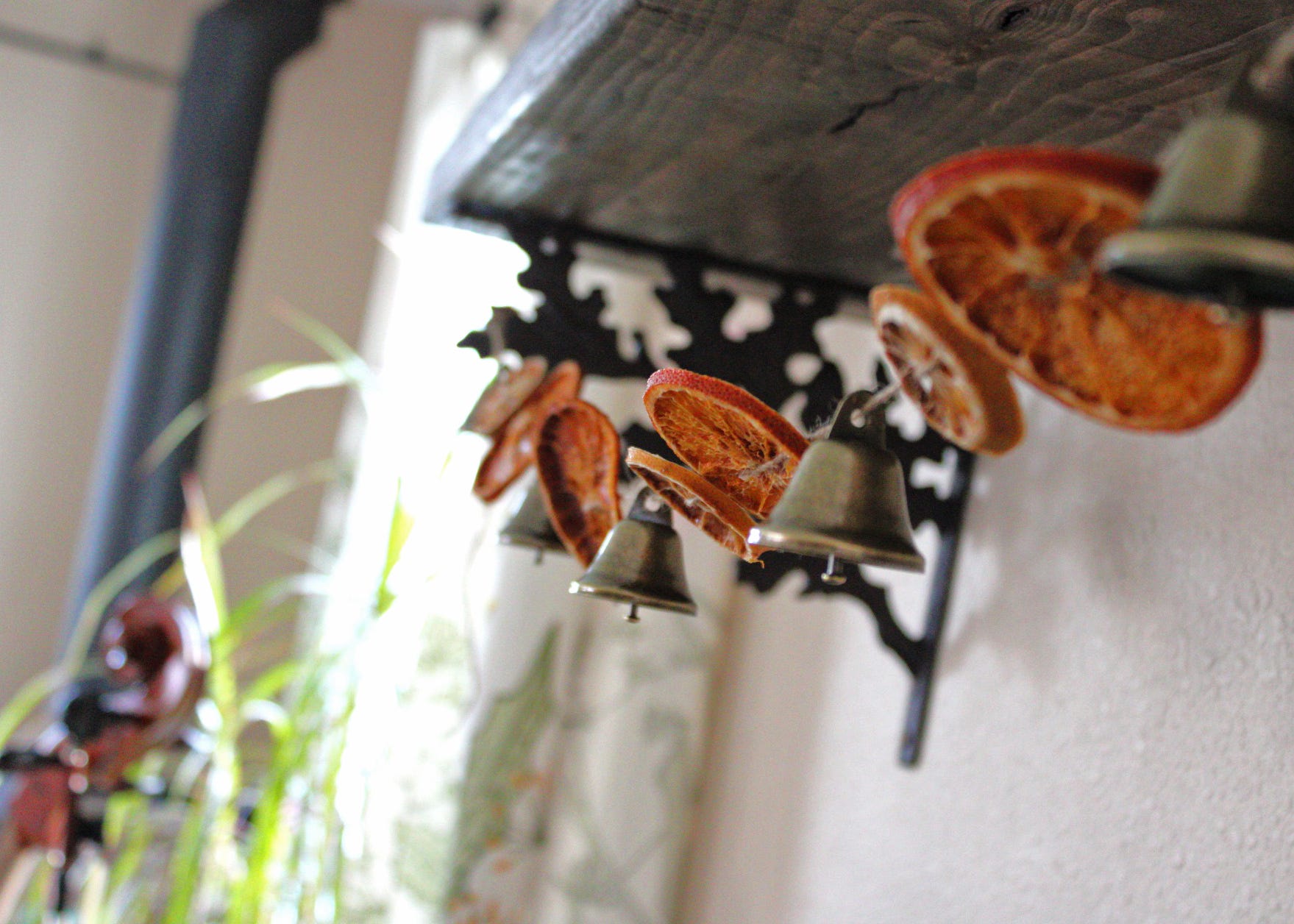


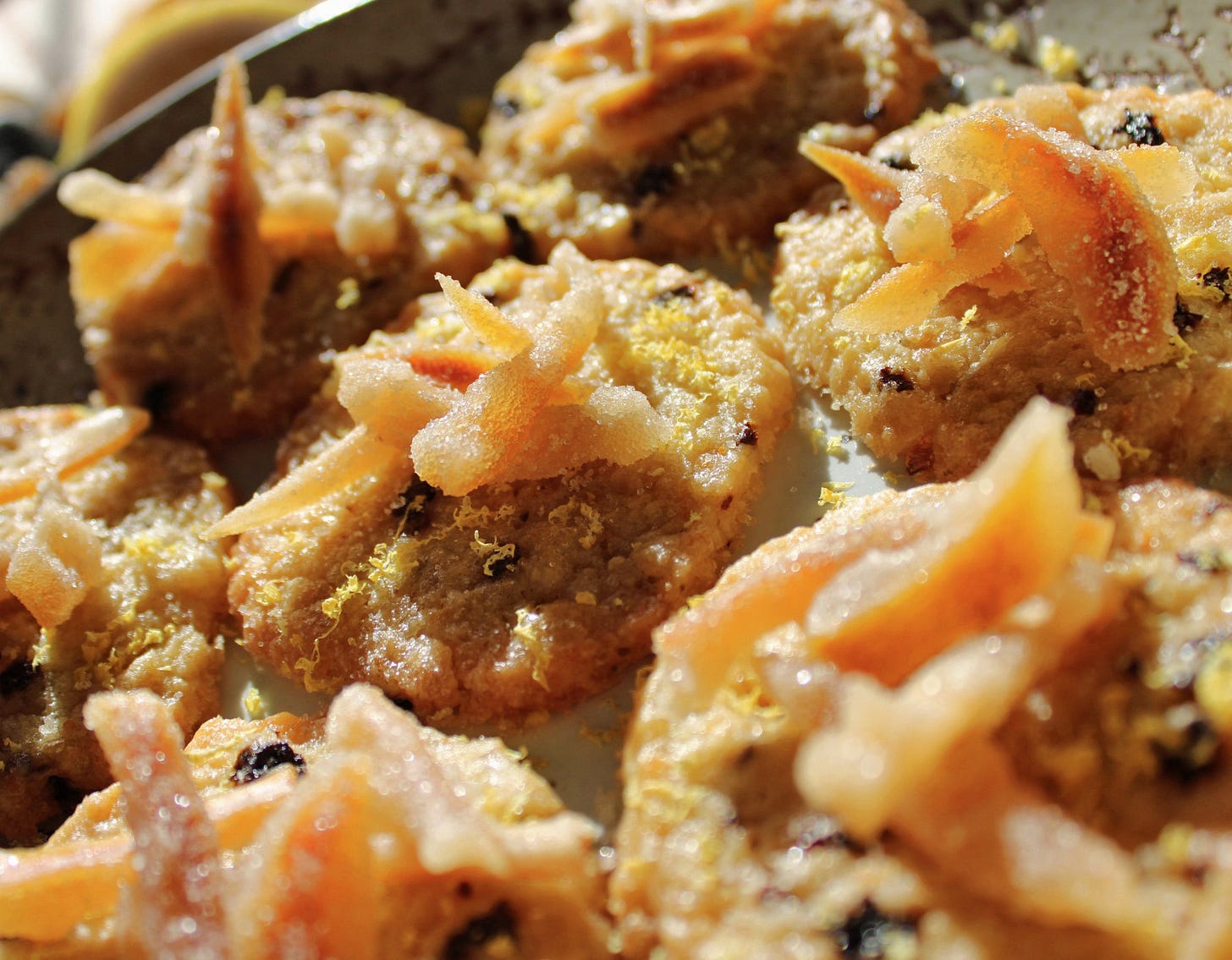

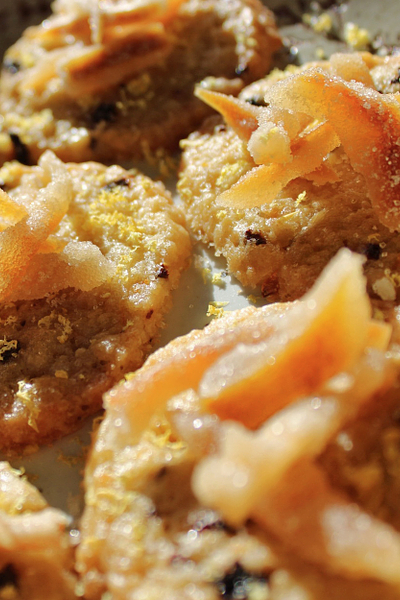
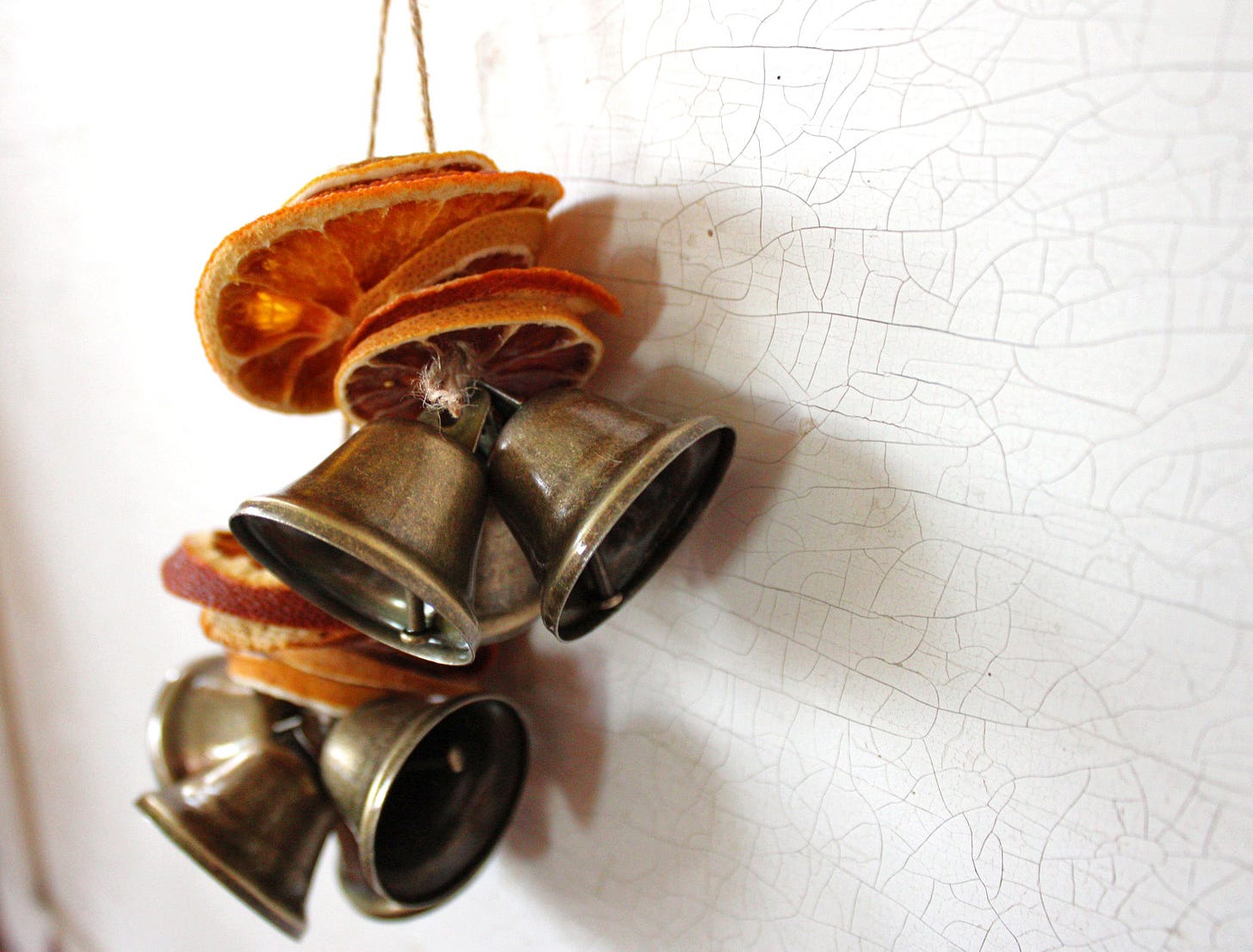
Goodness me Kristin - your posts are beautiful! (this is the first I read since signing up) The sights and smells just jump off the page and you will have me running out for lemons tomorrow! We bake a traditional Swiss Christmas lemon cookie (although originally from Milan, Italy) called Mailaenderli:
250 g sugar
250g butter - whip together until smooth
3 eggs -combine
1 lemon - peel finely grated (not juice)
500 g flour
combine and cool for 1 hour
roll to 5mm thickness and use cookie cutters for shapes
brush with egg and bake for 10-12 min at 200 C
Maybe a bit much detail, but thought it was the perfect spot to share this delicious recipe :)
Of interest/delight: https://en.wikipedia.org/wiki/Walled_garden#Heated_walls